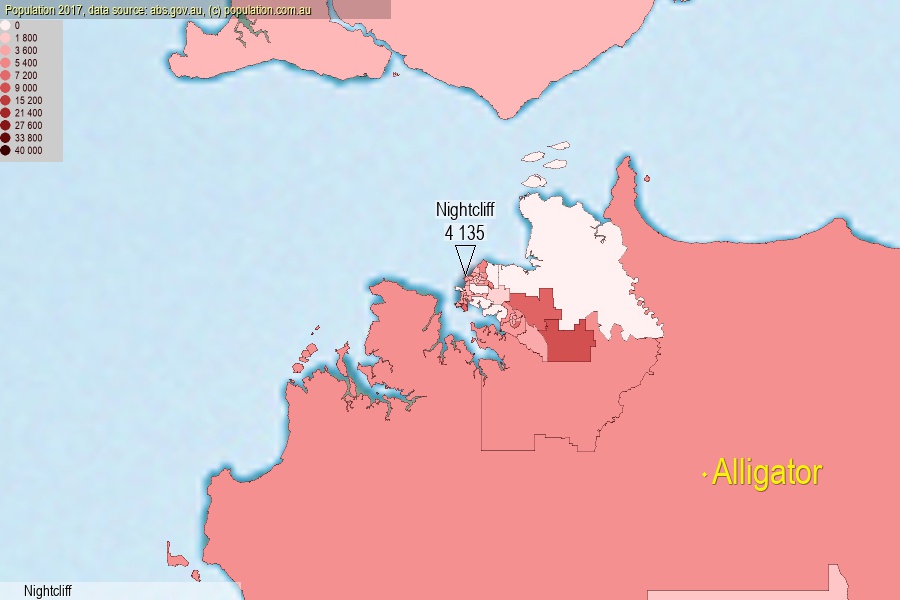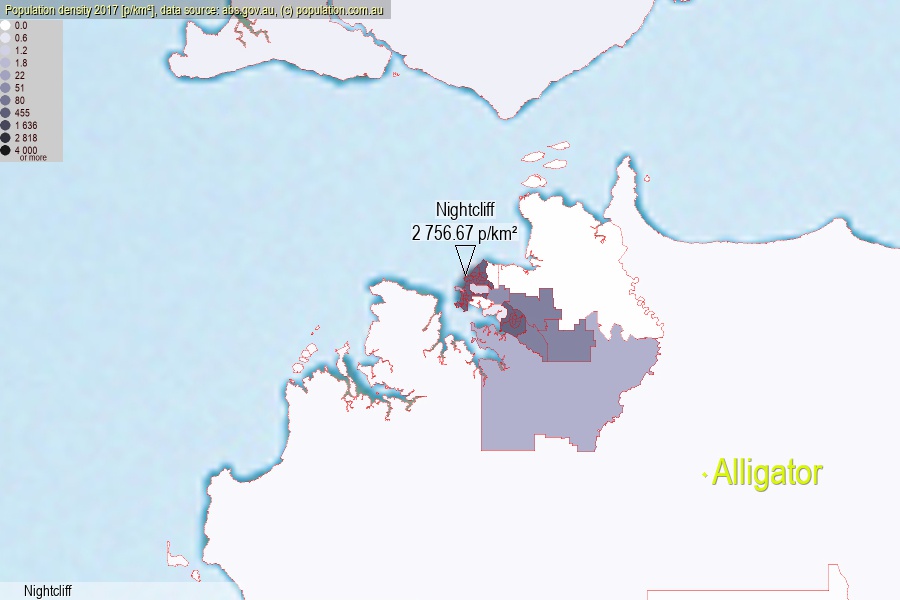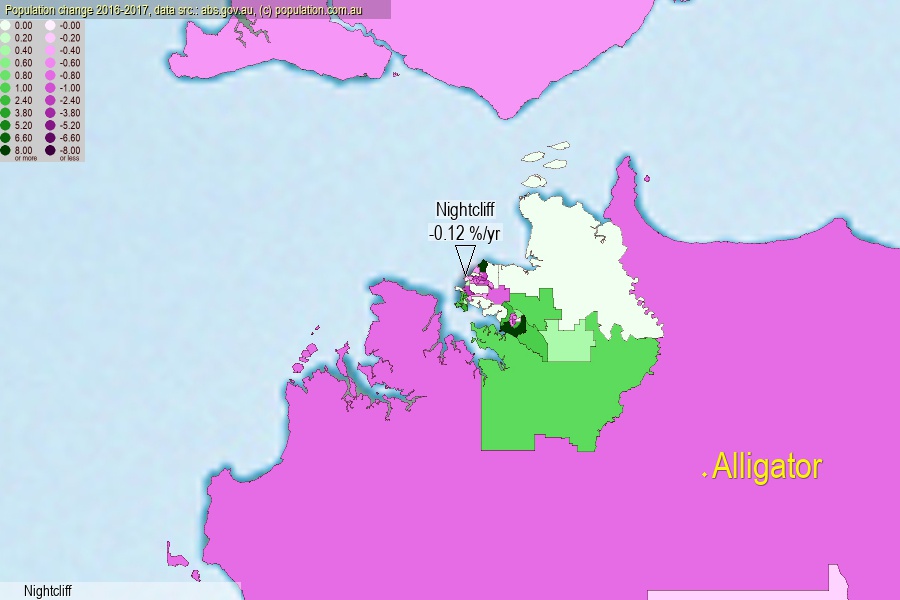 population.com.au
population.com.auLast official estimated population of Nightcliff (as Statistical Area Level 2) was 4 135 people (on 2017-06-30)[2]. This was 0.02% of total Australian population and 1.676% of NT population. Area of Nightcliff is 1.50 km², in this year population density was 2 756.67 p/km² . If population growth rate would be same as in period 2016-2017 (-0.12%/yr), Nightcliff population in 2025 would be 4 095. [0]



Click to enlarge. Nightcliff is located in the center of the images.
Population [people], population density [p./km²] and population change [%/year] [2]
View borders » (new window) [4]
[1991-1992] +0.21 %/Yr.
[1992-1993] -0.21 %/Yr.
[1993-1994] +0.37 %/Yr.
[1994-1995] +1.67 %/Yr.
[1995-1996] +1.33 %/Yr.
[1996-1997] -0.44 %/Yr.
[1997-1998] -1.24 %/Yr.
[1998-1999] -2.43 %/Yr.
[1999-2000] -1.99 %/Yr.
[2000-2001] -1.64 %/Yr.
[2001-2002] -0.19 %/Yr.
[2002-2003] -0.33 %/Yr.
[2003-2004] +0.17 %/Yr.
[2004-2005] +1.76 %/Yr.
[2005-2006] +1.02 %/Yr.
[2006-2007] +2.34 %/Yr.
[2007-2008] +2.58 %/Yr.
[2008-2009] +2.30 %/Yr.
[2009-2010] +1.11 %/Yr.
[2010-2011] -0.28 %/Yr.
[2011-2012] +0.65 %/Yr.
[2012-2013] +3.74 %/Yr.
[2013-2014] -0.12 %/Yr.
[2014-2015] -0.36 %/Yr.
[2015-2016] -0.02 %/Yr.
[2016-2017] -0.12 %/Yr.
[0] Calculated with linear interpolation from officially estimated population
[1] Read more about SA2 and Australian Statistical Geography Standard (ASGS) on abs.gov.au
[2] Population data from Australian Bureau of Statistics (Population and density: 2017; change: 2016-2017)
[3] Digital Boundaries: Australian Statistical Geography Standard (ASGS) 2016.
[4] Border coordinates are simplifyed using Ramer-Douglas-Peucker algorithm.